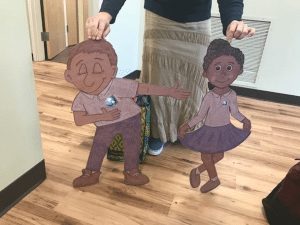The Montessori Teacher Difference
Montessori teachers aren’t like traditional teachers, and you will notice right away. You won’t
see an adult up front lecturing while students passively listen. Instead, you will see a dynamic
environment with the students as the focal point. Within this unique classroom setting, the
teacher’s role is quiet yet extremely important.
Montessori teachers function as guides for each of their students’ individual learning paths. It
takes a sharp focus and a great investment of energy to manage each child’s developmental
journey. A Montessori guide monitors each of her students’ progress through the curriculum.
With this information, she creates optimal learning opportunities for them at just the right
moment.
5 Ways Montessori Teachers Are Different:
Quiet Observers
A typical Montessori classroom will have children directing their own activities at small tables or
rugs. A guide may sit back and observe his work. She will be noting his progress and deciding
when he is ready to move to the next level of difficulty.
Montessori guides observe quietly, often out of the child’s line of sight. Maria Montessori wrote
about how the smallest distraction from adults could completely distract an engaged child. She
urged teachers not to disturb a child’s focus, not even with praise.
Preparers of the Environment
The prepared environment is a defining aspect of the Montessori classroom. The room is set up
to best meet the children’s developmental needs. As they progress, their needs change and the
environment must reflect this. The job of deciding when to make these adjustments and carrying
them out falls to the Montessori Teachers acting as guides.
At the start of a term, the classroom is set up to meet the general needs of its age group. This
requires the teacher to know a lot about the usual readiness and common interests of students
in her age group. As the year goes on, she will learn about the unique passions each child
possesses. She will also monitor their academic progress. This knowledge will inform how the Montessori Teachers prepare the room and when she introduces new materials.
Individual and Small Group Lessons
You won’t generally see whole class lessons in a Montessori classroom. Every child develops
according to his own pace. Therefore, it is most effective for the Montessori Teachers to teach new lessons to each student as they become ready.
During class time, guides will either observe students for readiness or they will present lessons
to students. Lessons are presented individually or in small groups. In a preschool classroom, a
teacher might introduce the dressing frames right when they see a child beginning to become
interested in buttoning his own jacket. Or they might play I Spy games with a small group of
children who can identify beginning sounds.
Allow Space For Students To Construct Their Learning
We often think of teachers as responsible for letting kids know if they are right or wrong.
Montessori teachers will not do this. Firstly, the materials are designed to be self-correcting. That
way, the student already knows if he has completed a work correctly. For example, if he is lining
up rods from longest to shortest, he will see if he has missed one once he has finished.
Montessori teachers hold back from correcting an apparent mistake, and instead, let the child
discover it on his own. Learning is most effective when the student guides the process. Noticing
his own errors and correcting them empowers and encourages the child.
Positive Discipline
Montessori guides use a form of discipline that uses neither punishment nor rewards. Instead,
the guide encourages the children with a skill-based approach to behavior and ensures a
developmentally appropriate setting.
Positive discipline assumes the child’s goodwill. Misbehaviors are interpreted as
communication; the guide investigates what is behind any poor conduct. She works with the
students to help them behave appropriately.
Much of what Montessori teachers do is not immediately apparent. However, they are the
ones who orchestrate these perfectly harmonious learning environments. If you notice the
students before their teacher, that is a sure sign of a job done well.

